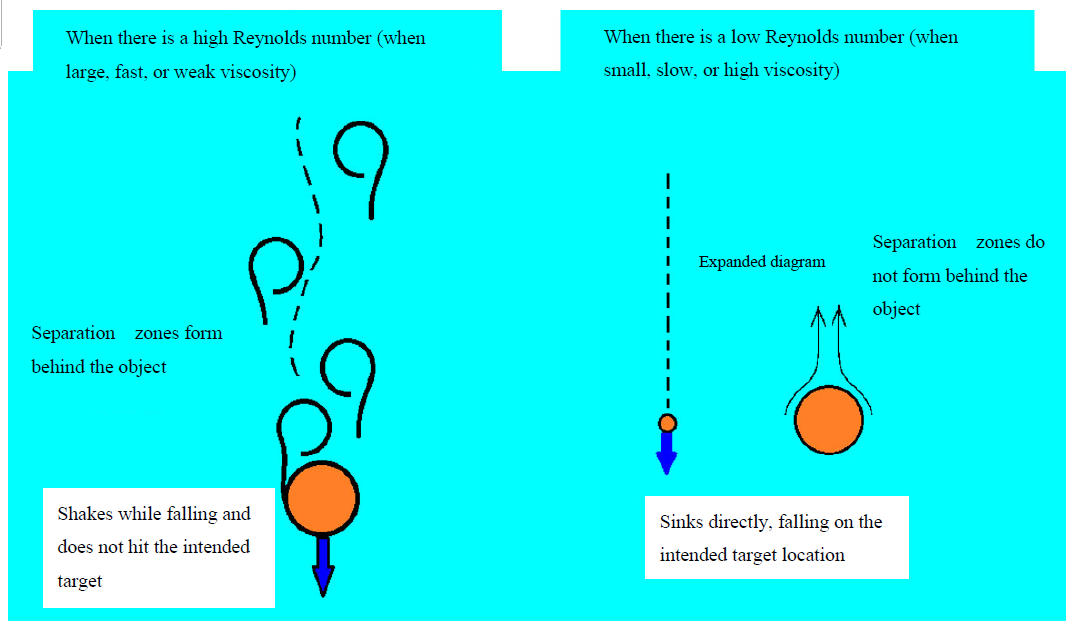Drop on intended target 2
Let's take a look!
What type of experiment is this?

Experimental procedure and explanation:
- In this case, the Reynolds number Re becomes small, and the effect of viscosity becomes stronger, making it difficult for a separation vortex to form behind the sphere. The Reynolds number Re can be calculated using the following equation
Re = U L /ν
Let U be the settling velocity [m/s], L the representative length [m] (standard dimension, diameter for a sphere), and ν be the kinematic viscosity of the fluid (for water at room temperature, approximately 10-6 m2/s) of the fluid. - Reynolds number Re is less than 1, the effect of viscosity is very strong, and no detachment vortex is generated. Even below about 10, asymmetric separation vortices are unlikely to form and will not shake.
- Under the conditions of this movie, the Reynolds number is not sufficiently small, and it sinks even with a slight shake.
(We looked for a plastic ball that would sink in water with a diameter of 1 mm or less, but we were unable to find one. In such a case, we presume that it would sink straight down without shaking.) - One way to sink an object straight down is to use a small sphere or disc to reduce the Reynolds number and increase the viscous effect. At this time, the smaller sedimentation rate also suppresses the Reynolds number, resulting in a synergistic effect.
- This experimental video was produced with the support of JSPS Grant-in-Aid for Scientific Research 18K03956.
| [Keywords] | Separation vortex, Reynolds number |
| [Related items] | |
| [Reference] | Ryozo Ishiwata, "The Wonder of Flow," Kodansha Blue Backs, P16-21. Ryozo Ishiwata, "Illustrated Fluid Dynamics Trivia", Natsume Publishing, p. 28-29. |
Last Update:1.31.2025

